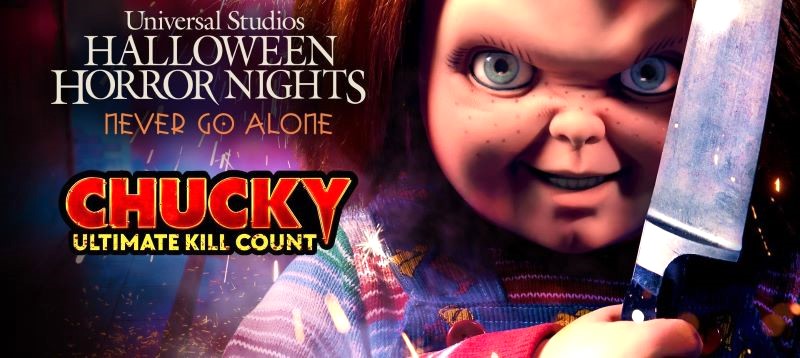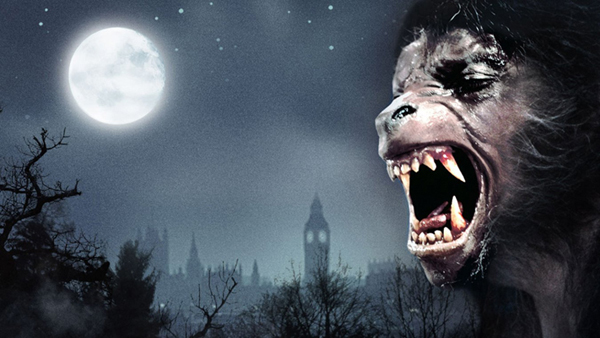Halloween haunted-houses and rides that pop up in big theme parks take additional urgency after a soft summer season, resulting in more park adaptations of horror and suspense films for seasonal attractions.
Universal Studios parks in Orlando and Los Angeles are particularly prolific with their autumn Universal Halloween Horror Nights franchise, and announced creation of a year-round attraction for Las Vegas. Six Flags Entertainment, Cedar Fair parks, Disney parks and SeaWorld also beef up seasonal horror attractions.
Sometimes these are generic and other instances are based on famous film/TV intellectual property. Movies/TV franchises are often based on novels, but it’s the visual adaptations make them major pop-culture icons.
For 2023 at Universal Destinations & Experiences, the movie-related intellectual properties adapted to experiential attractions are “Chucky: Ultimate Kill Count,” “The Exorcist: Believer,” “The Purge: Dangerous Waters” and Blumhouse: Behind the Screams. The Universal park package spans eight haunted houses, three scare zones and the signature Terror Tram.

Universal Studio park’s corporate sibling Hollywood movie studio is most associated with horror films, going back to “Dracula” in 1931 and “The Mummy” in 1932, so it’s interesting it also licensed a park adaptation of Netflix thriller TV series “Stranger Things” for its ride bundle.
In what is typical for such seasonal attractions Halloween Horror Nights runs select nights at Universal Orlando Resort from Sept. 1-Nov. 4, and at Universal Studios Hollywood from Sept. 7-Oct. 31.
Elsewhere, Six Flags Entertainment is planting Halloween rides across its footprint, even at its German outpost, where the Scottish-originated Halloween isn’t a cultural fixture. Six Flags parks emphasize thrill rides catering to the youth demographic that is also the same population segment key to embracing horror films. Six Flag’s film adaptations are based on the “Saw X” and “The Conjuring” flicks.
Walt Disney Co. tried to enlarge its horror footprint with July release of live-action horror film “Haunted Mansion,” which is based on a venerable Disney park ride. But the movie starring Owen Wilson, Tiffany Haddish, Danny DeVito and Jamie Lee Curtis was a dud at the boxoffice (an earlier 2003 film adaptation starring Eddie Murphy was also a dud). Still, five Disney gated attractions are offering seasonal scares this year.
Jen Juneau writes on People.com that Universal’s season stunts represent “new and old footing, tapping into what it has arguably always done best with its theme-park events — original creative content — while leveraging several intellectual properties (IPs) that have managed to be lifted to an impossibly fresh level.”
Film owners typically receive a few percentage points of the attractions’ revenue as a licensing royalty and their horror franchise IP basks in a fresh, new light. These theme park attractions are considered a type of licensed merchandise in the “service” category (the experience that is paid for) and is no different a comic-con fan event built around a brand for which there is a fee for entry.
The park attractions also generate licensing of movie-themed merchandise such as tee-shirts connected to the park attraction and other commemorative items, again generating royalties for the movie’s copyright holders.
The theme park business is coming off a soft summer. “Disney, Six Flags are counting on ghouls, ghosts and zombie attractions after hot weather cut into summer visits,” says a Wall Street Journal headline. Theme parks also beefed up seasonal October Fest stunts, which are short term promotions and pop-up attractions. Those seasonal attractions also draw adults, versus the park’s reliance on the youth demographic in summers; adult attractions generally boost park attendance in evenings.
That theme parks suffered low attendance this summer is a bad sign for cinemas, because both are out-of-home leisure. However, cinema and the live concert business are holding up well. The theme park woes may stem from a spat of above-inflation price hikes, which have sparked a consumer backlash.
The Wall Street Journal article by Will Feuer notes autumn promotions of the past have visibility lifted revenue: “Across Six Flags, SeaWorld and Cedar Fair, the fourth quarter, which runs from the start of October through the end of the year, has become a bigger source of annual revenue over the past decade. In 2019, Cedar Fair generated more than 17% of its annual sales in the fourth quarter, up from 12% in 2013.” That’s a big swing.
The fright attractions draw consumers who want to experience controlled scares, especially so they can squeeze their romantic partners while out on date nights. Halloween seasonal attractions at theme parks go back to 1973, when Knott’s Berry Farm park in suburban Los Angeles introduced “Knott’s Scary Farm.” Knott’s is now owned by Cedar Fair parks. This year such initiatives are expanding as limited time scare experiences are promotable special events.
Related content:


Leave a Reply